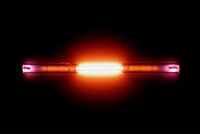
Photo from wikipedia
This study delineates the impact of a man-made hydrological barrage [Thannermukkom barrage (TB)] on the concentration of selected trace metals (Fe, Zn, Cu, Co, Cr, Mn, Ni, Pb) in mesozooplankton… Click to show full abstract
This study delineates the impact of a man-made hydrological barrage [Thannermukkom barrage (TB)] on the concentration of selected trace metals (Fe, Zn, Cu, Co, Cr, Mn, Ni, Pb) in mesozooplankton from the Kochi backwaters (KBW). The overall results point out that during Pre-Southwest Monsoon (PRM), the concentration of trace metals in mesozooplankton was high in the upstream due to the closure of the barrage, which essentially causes stagnancy of the waters. Trace metal concentrations in the downstream and upstream regions of KBW were found to be lower during Post- Southwest Monsoon (PSWM) compared to the rest of the seasons. In general, trace metals in mesozooplankton from the KBW showed the following order of concentration: Fe > Mn > Zn > Ni > Cu > Cr > Co > Pb. A comparison with earlier data across the globe showed that trace metal concentration in mesoplankton in the KBW is lower than the values reported from other parts of the world.
Journal Title: Marine pollution bulletin
Year Published: 2020
Link to full text (if available)
Share on Social Media: Sign Up to like & get
recommendations!